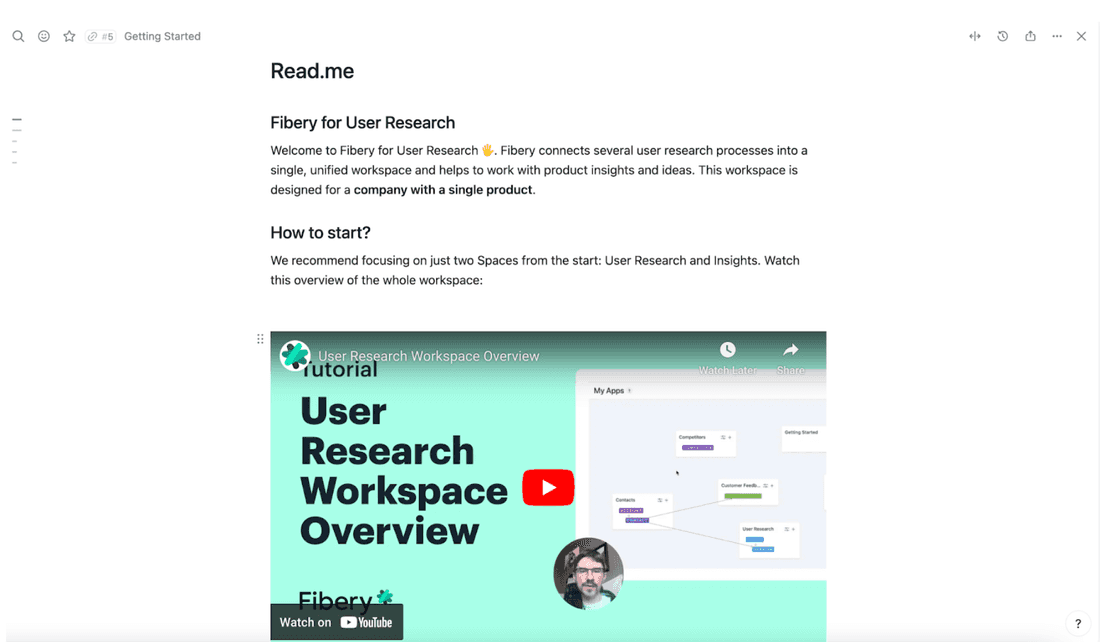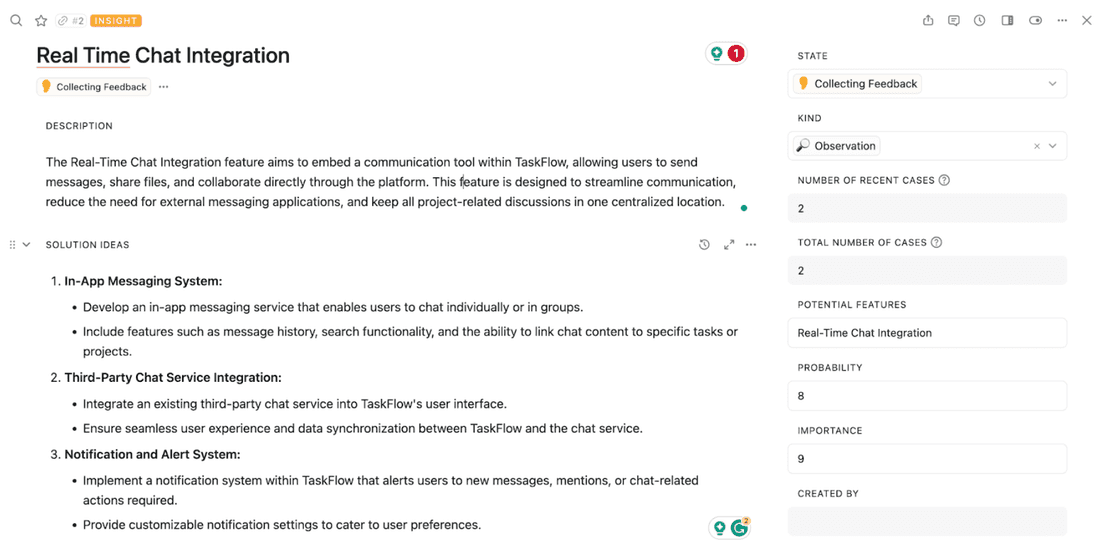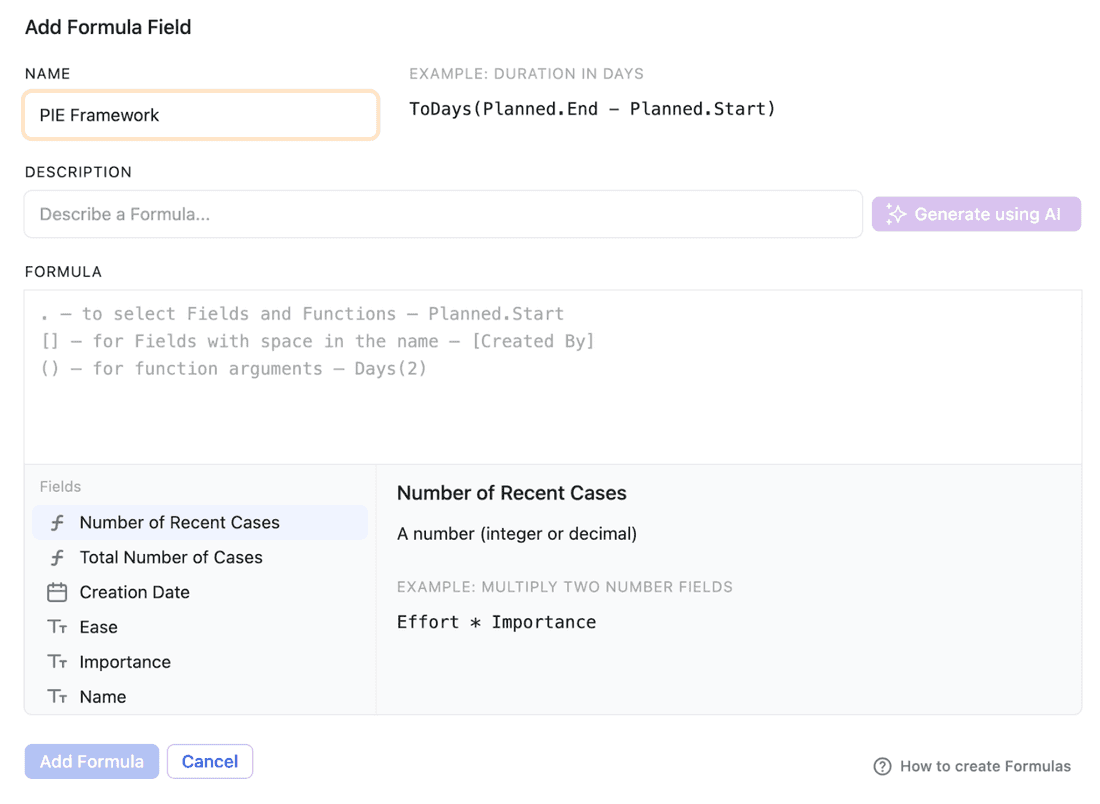Everything You Need to Know About the PIE Prioritization Framework
Product managers often grapple with the challenge of prioritizing projects effectively, and with so many frameworks out there, choosing the right one can be overwhelming.
That’s where the PIE prioritization framework comes in.
This article will provide a concise overview of the PIE model, unpacking the meaning behind each letter and its practical application.
We’ll also briefly compare PIE to other prioritization methods like ICE and RICE, setting the stage for a deeper exploration of these techniques in future discussions.
Ready to get to the core of the PIE framework? Let’s dive in.
What’s PIE and how it’s used?
PIE is a pragmatic framework that stands for Probability, Impact, and Ease, each a criterion for prioritizing potential projects or features.
It’s a tool used by product managers to navigate the often murky waters of what to tackle next in their product development cycle.
The beauty of the PIE framework lies in its simplicity.
It leaves behind complex algorithms for a more intuitive approach. By assigning a score to each of the three factors, teams can quickly gauge which initiatives are most likely to succeed, offer the highest value, and are the easiest to execute.
This scoring system helps to clear the fog when deciding where to allocate resources, ensuring efforts are directed towards tasks with the greatest overall benefit for the product and business.
In essence, the PIE framework is about efficiency. It’s a streamlined process that empowers teams to make informed, strategic decisions swiftly.
If you’ve heard of PIE, you’ve likely also heard of its cousin, the ICE method—which instead focuses on Impact, Confidence, and Ease. RICE, extending this further to include Reach, helps to quantify the number of people each task will affect, which can be particularly useful in product decisions that affect a large user base.
Both ICE and RICE bring additional dimensions to prioritization, catering to different needs and complexity levels that some teams might require.
Explaining PIE: Potential
When dissecting the PIE framework, the first piece we encounter is Potential, often framed as Probability in some interpretations. This slice of PIE assesses the likelihood of a project’s success if a particular feature or enhancement were to be implemented.
Gauging success likelihood
Potential asks a straightforward question: What are the chances that this will work?
It’s a forward-looking estimate, grounded in data and experience, that considers market trends, user feedback, and the current competitive landscape.
It requires product managers to draw on both quantitative data and qualitative insights to forecast the odds of a project’s positive impact on the product’s trajectory.
The calculation of potential
Potential is typically scored on a scale, perhaps 1 to 10, where the higher the number, the higher the probability of success. It’s not just a wild guess; it’s an educated prediction based on several factors:
- Market analysis: What does the market data suggest about the need or desire for this feature?
- User demand: Have users been asking for this? How does it rank in their list of requests?
- Historical data: How have similar features performed in the past?
- Resource availability: Do we have the right talent and tools to execute this well?
In short, Potential is your litmus test for viability.
It ensures that before you invest time and resources into a project, you’re confident it has a fighting chance to flourish. By quantifying this potential, you can prioritize projects that are not only promising but also stand on solid ground.
Explaining PIE: Importance
The ‘I’ in the PIE framework shifts the focus from the likelihood of success to the magnitude of impact: Importance. This is where you assess the value a feature or project brings to the table. It’s a critical component that asks not if an initiative will succeed, but how much it matters if it does.
Measuring the impact
Importance is about understanding the effect each potential feature has on your users and business. Will it significantly enhance the user experience? Could it drive revenue growth, increase market share, or improve customer retention? This element requires you to measure the expected benefits and weigh them against the company’s strategic goals.
Quantifying importance
Like Potential, Importance is also scored on a scale, encouraging a comparative look at all potential initiatives. This score reflects a feature’s ability to move the needle on key performance indicators (KPIs) and overall business objectives. Considerations may include:
- User satisfaction: How will this feature improve the daily interactions users have with your product?
- Business impact: What tangible benefits will this bring to the business? Think conversion rates, sales volumes, or cost reductions.
- Strategic alignment: Does it align with the long-term vision and goals of the product and company?
By evaluating Importance, you prioritize features based on their potential to make a substantial and meaningful difference. It ensures that your product roadmap isn’t just filled with probable successes, but with initiatives that are crucial to your product’s and business’s growth and success.
Explaining PIE: Ease
After Potential and Importance, we come to ‘Ease’—the last, but by no means least, slice of the PIE prioritization framework. Ease examines how straightforward it will be to implement the features or projects under consideration.
Assessing implementation feasibility
Ease is the reality check within PIE, bringing a pragmatic lens to the high hopes pinned on Potential and the ambitious goals set by Importance. It asks a simple yet profound question: How easy is it to make this happen? This factor is about feasibility, taking into account the current state of your resources, technical constraints, and the time required to deliver.
Scoring for simplicity
Scoring for Ease typically involves a scale similar to the other PIE components.
A higher score indicates that a feature is relatively simple to implement, perhaps due to existing infrastructure, available skills within the team, or a lower need for investment. Points to consider include:
- Resource availability: Do you have the necessary resources, or will you need to acquire new ones?
- Technical debt: Will this feature build upon established structures, or will it require a significant overhaul?
- Timeframe: Can it be completed within a reasonable timeline, or does it risk becoming a drawn-out affair?
Ease ensures that prioritization is not just about what’s desirable or beneficial but also what’s practical. By giving precedence to tasks that are easier to accomplish, you can maintain momentum and ensure continuous delivery of value to users.
The PIE Prioritization in Action
Putting the PIE framework to work within Fibery is like setting the stage for a well-orchestrated play where each act is meticulously planned for impact.
Fibery’s flexible platform serves as the ideal backdrop for PIE, allowing product teams to move from theory to practice with efficiency and ease.
1. Setting the scene with Fibery

Imagine you’re at the helm of a new feature rollout. You have a list of potential updates, enhancements, and new directions your product could take.
Fibery’s workspace is your canvas, and PIE is your palette for painting a prioritization strategy that resonates with your team’s goals and capacity.
2. Probability: evaluating chances of success

First, you start with ‘Probability’. In Fibery, create a table with a list of your potential features.
Next to each item, add a column where team members can score the likelihood of success based on market analysis, user feedback, or past performance data.
Fibery’s collaborative nature means scores can be debated and consensus reached in real-time, ensuring a unified front as you advance.
3. Importance: weighing the impact

For ‘Importance’, add another column.
Here, you’ll measure the potential impact of each feature. Fibery allows you to link these features to user stories or customer requests, providing a visual thread between user demand and proposed product changes.
You can also integrate with analytics tools to pull in data that helps estimate the business impact, thus informing your scoring with empirical evidence.
4. Ease: assessing feasibility

When it comes to ‘Ease’, Fibery shines by offering a comprehensive view of your team’s current projects, resource allocation, and bandwidth.
Add a column for ease of implementation, and score each feature based on technical debt, resource availability, and estimated time to market.
Fibery’s ability to encapsulate the full spectrum of project management tools means you can see at a glance if you have the necessary means to implement the feature smoothly.
5. Bringing PIE together

Once you have your scores for Probability, Importance, and Ease, Fibery’s formula fields come into play.
Calculate the average or total score for each feature to rank them in order of priority.
This data-driven approach, facilitated by Fibery’s customizable fields and real-time calculations, allows you to pivot quickly as variables change and new information comes to light.
The PM’s hot take
The PIE prioritization framework may seem like just another framework in the overflowing product management toolkit, but it’s deceptively powerful.
Some may argue it’s too simplistic, but in my experience, its beauty lies in that simplicity. It cuts through the noise and boils down prioritization to the bare essentials: Will this work? Does it matter? Can we do it? In a field where complexity often clouds judgment, PIE is a breath of fresh air that empowers decisive action.
It’s not about over-analyzing—it’s about getting things done. And in the fast-paced world of product development, that’s not just refreshing, it’s critical.
Conclusion
The PIE framework slices through complexity to give you a practical tool for prioritization in product management.
If you’re ready to taste the simplicity and effectiveness of PIE, Fibery is the place to start.
Sign up today to streamline your decision-making process.
And for those hungry for more insights, feast on our related articles on ICE and RICE prioritization techniques to round out your strategic planning skills.
With Fibery, you’re well-equipped to turn prioritization into a piece of… well, you know.
Psst... Wanna try Fibery? 👀
Infinitely flexible product discovery & development platform.